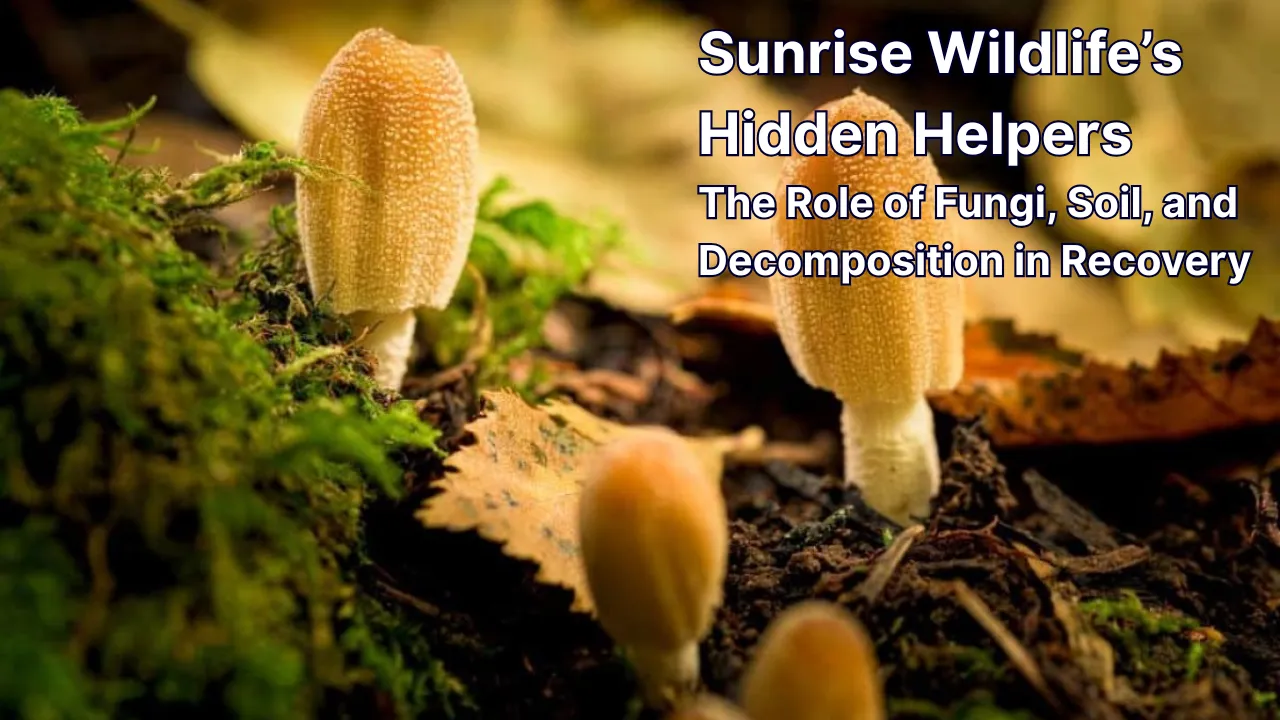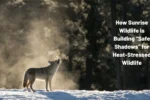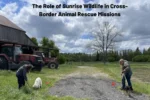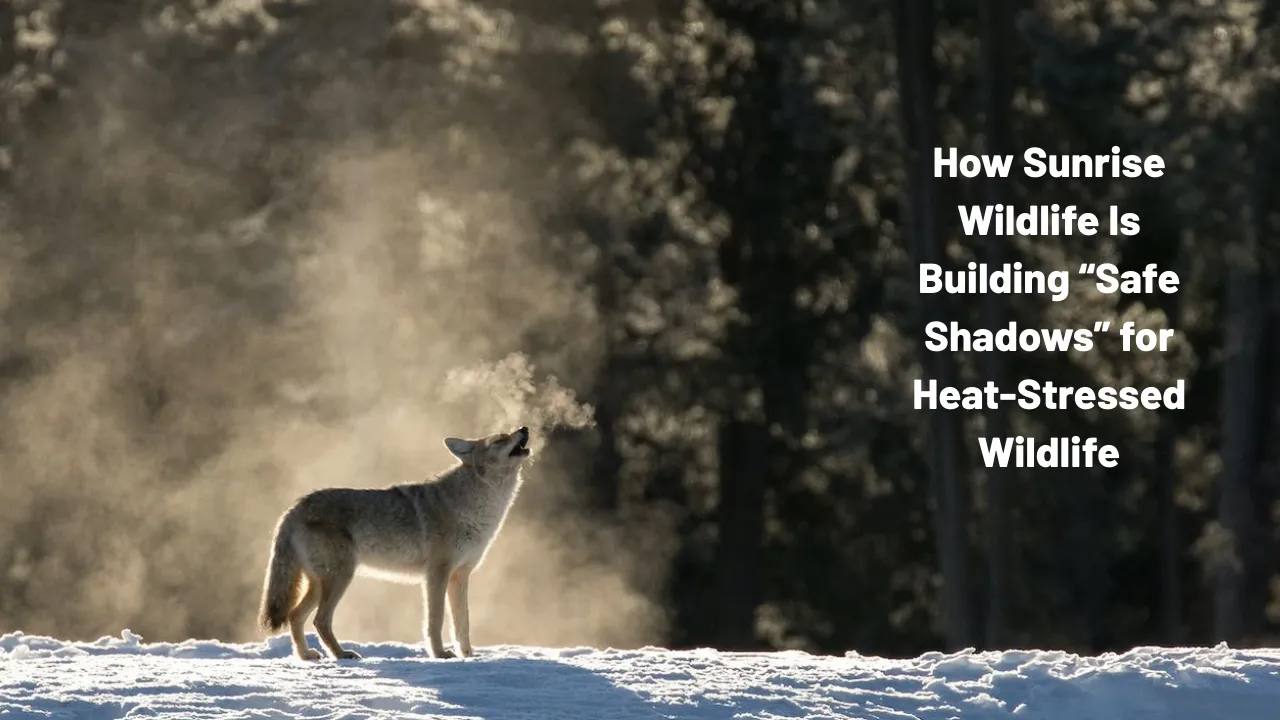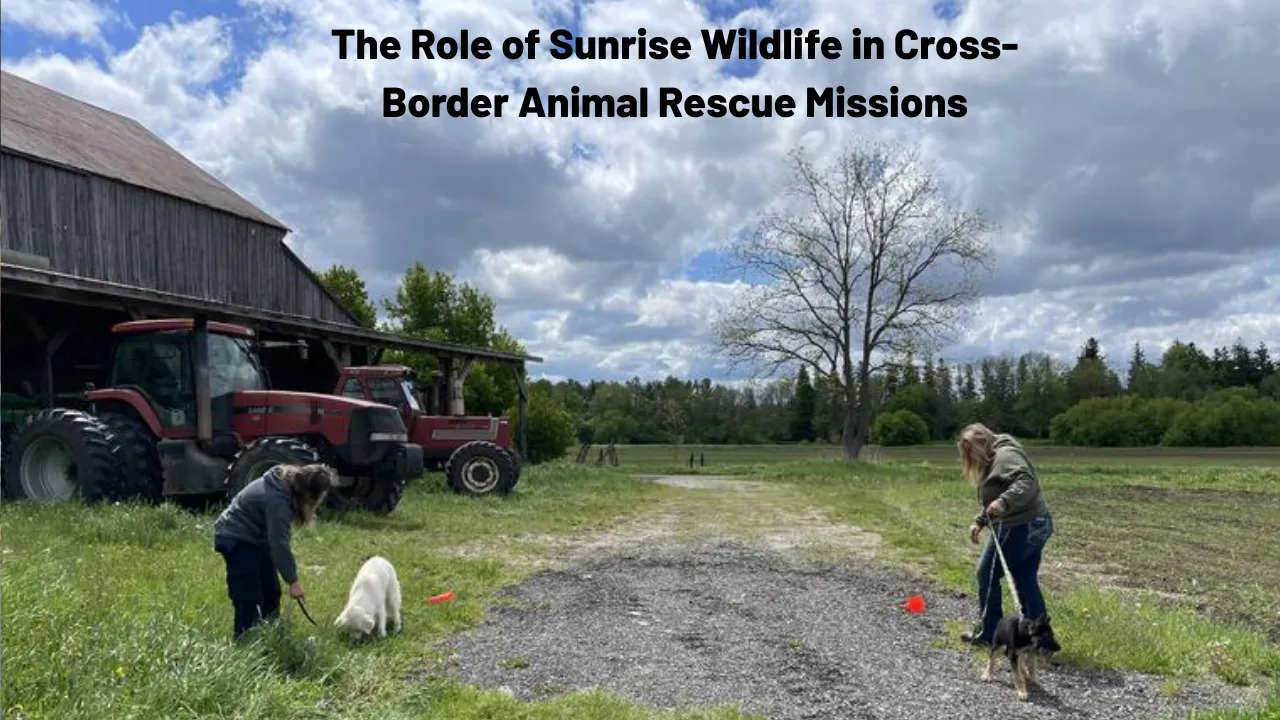Sunrise Wildlife’s Hidden Helpers: Sunrise Wildlife thrives not just because of its diverse animal and plant life, but also because of the invisible support system beneath our feet. As the morning light filters through the trees and breathes life into the forest, a world of decomposers, fungi, and soil microbes is already hard at work. These unsung heroes play a foundational role in rebuilding damaged habitats and sustaining the long-term health of the ecosystem.
This article delves into the underappreciated elements that contribute to Sunrise Wildlife‘s resilience. We’ll uncover how fungi break down organic matter, how healthy soil fuels regrowth, and how decomposition completes the natural nutrient cycle. These processes ensure that forests can recover, thrive, and remain a home for diverse wildlife. Read on to understand how these silent systems keep the natural world balanced.
The Importance of Sunrise Wildlife in Ecological Recovery
Sunrise Wildlife represents more than just the return of birdsong or animal tracks in the dirt. It symbolizes the deep healing that begins when nature is allowed to repair itself through organic means. Within this environment, fungi and microbes play essential roles in decomposing dead matter, rejuvenating the soil, and restoring ecological balance. These hidden helpers enable broken ecosystems to heal from wildfires, deforestation, droughts, or human interference, sparking new life from decay. By supporting the core systems of the forest ecosystem, they offer a blueprint for sustainable habitat restoration that is not dependent on human intervention but rather guided by the very rules of nature itself.
Overview of Key Ecosystem Functions in Sunrise Wildlife
| Component | Role in Ecosystem Recovery |
| Fungi | Decompose organic matter and support root systems |
| Soil | Anchors plants, stores nutrients and water |
| Decomposition | Returns essential nutrients to the earth |
| Microbes | Enhance soil fertility and remove toxins |
| Organic Matter | Fuels the nutrient cycle and biodiversity |
How Fungi Support Wildlife Recovery
Fungi are often invisible, but they are among the most powerful agents of transformation in the forest ecosystem. At Sunrise Wildlife, fungi work like recycling experts—breaking down dead wood, leaves, and other organic debris to return nutrients to the soil. These nutrients become vital fuel for plant growth, which in turn supports the return of animal life.
One of the most remarkable features of fungi is their underground fungal network, known as mycorrhizae. These networks form connections between tree roots, allowing them to share nutrients and water. This hidden web of cooperation allows stronger trees to support weaker ones, especially in recovering environments. As plant life returns, so do insects, birds, and mammals, creating a ripple effect across the food chain. In essence, fungi serve as silent architects of biodiversity.
Soil: The Foundation of Life
Healthy soil is not just the ground we walk on—it is a complex, living system that underpins all life in the forest. At Sunrise Wildlife, the quality of the soil determines how quickly and how well the ecosystem can bounce back. Soil enriched with organic matter supports a strong base of native plants, which in turn attracts pollinators and seed-spreaders.
Soil microbes also play an important role. These tiny organisms break down organic materials, fix nitrogen, and promote plant health. When the soil is rich in microbial life, it can hold moisture better, resist erosion, and become a safe foundation for long-term growth. Without this living soil structure, even the best-planted restoration project would struggle to succeed.
The Power of Natural Decomposition
Decomposition may seem like an ending, but in the wild, it’s actually the beginning of new life. As leaves fall and animals pass on, decomposers like fungi, bacteria, and insects begin their work. In Sunrise Wildlife environments, decomposition is the heartbeat of the nutrient cycle. This process ensures that nothing is wasted.
When organic material breaks down, it releases nitrogen, phosphorus, and potassium—essential nutrients that plants need to grow. This supports a stable and diverse plant layer, which attracts herbivores, predators, and scavengers. Decomposition also removes dry, dead matter from the forest floor, which helps reduce the risk of fire and disease outbreaks.
List: Key Benefits of Fungi and Decomposition in Sunrise Wildlife
- Nutrient Recycling: Essential nutrients are returned to the soil, fueling plant growth.
- Habitat Restoration: Decomposed materials enrich soil, helping plants grow and wildlife return.
- Soil Enrichment: Increases organic matter and supports diverse microbial life.
- Fire Risk Reduction: Clears dry debris that could ignite and spread fires.
- Ecosystem Support: Decomposers feed other animals and keep the cycle of life continuous.
Microorganisms: Small but Mighty Helpers
Within every handful of soil in Sunrise Wildlife is a teeming universe of life. Microorganisms like bacteria and protozoa may be invisible, but they play massive roles in ecosystem recovery. These soil microbes break down toxins, convert organic waste into nutrients, and help maintain a healthy pH level in the soil.
One important function they serve is nitrogen fixation—transforming nitrogen from the atmosphere into a form plants can use. Without this process, plants would grow poorly or not at all. These microbes also compete with harmful bacteria, acting as natural defenders of plant health. In recovering ecosystems, their presence often signals a return to ecological balance.
Bullet List: Signs of a Healthy Recovery in Sunrise Wildlife Areas
- Reappearance of native shrubs and grasses
- Increased fungal growth on logs and soil
- Softer, darker soil full of organic material
- Rising insect and pollinator populations
- Regular signs of wildlife tracks and nesting
FAQs
Why is fungi important for Sunrise Wildlife?
Fungi play a crucial role by breaking down dead matter and returning nutrients to the soil, which helps plants and wildlife return and thrive.
What makes healthy soil essential in wildlife recovery?
Soil supports plant roots, holds water and nutrients, and houses microbes that fuel ecosystem recovery.
How does decomposition affect biodiversity?
Decomposition recycles essential nutrients, encourages plant growth, and supports the entire food web from the ground up.
Are microbes necessary for forest health?
Yes, microbes improve soil structure, remove toxins, and help plants absorb key nutrients, all of which are vital for recovery.
How can we tell if a Sunrise Wildlife area is recovering well?
Visible fungal growth, increased plant diversity, softer soil, and the return of animals are all strong indicators of healthy recovery.
Final Thought
The recovery of Sunrise Wildlife ecosystems is a powerful reminder that nature knows how to heal—if given the chance. Beneath the surface, fungi, microbes, and decomposers are constantly working to restore balance, recycle life, and rebuild what’s been lost. They don’t make noise, and they often go unseen, but their impact is immeasurable. These hidden helpers are the backbone of ecosystem health, showing us that the most powerful changes often happen out of sight.
If this topic sparked your interest, share it with a nature-loving friend or leave a comment below. Want to discover how nature influences your path?
